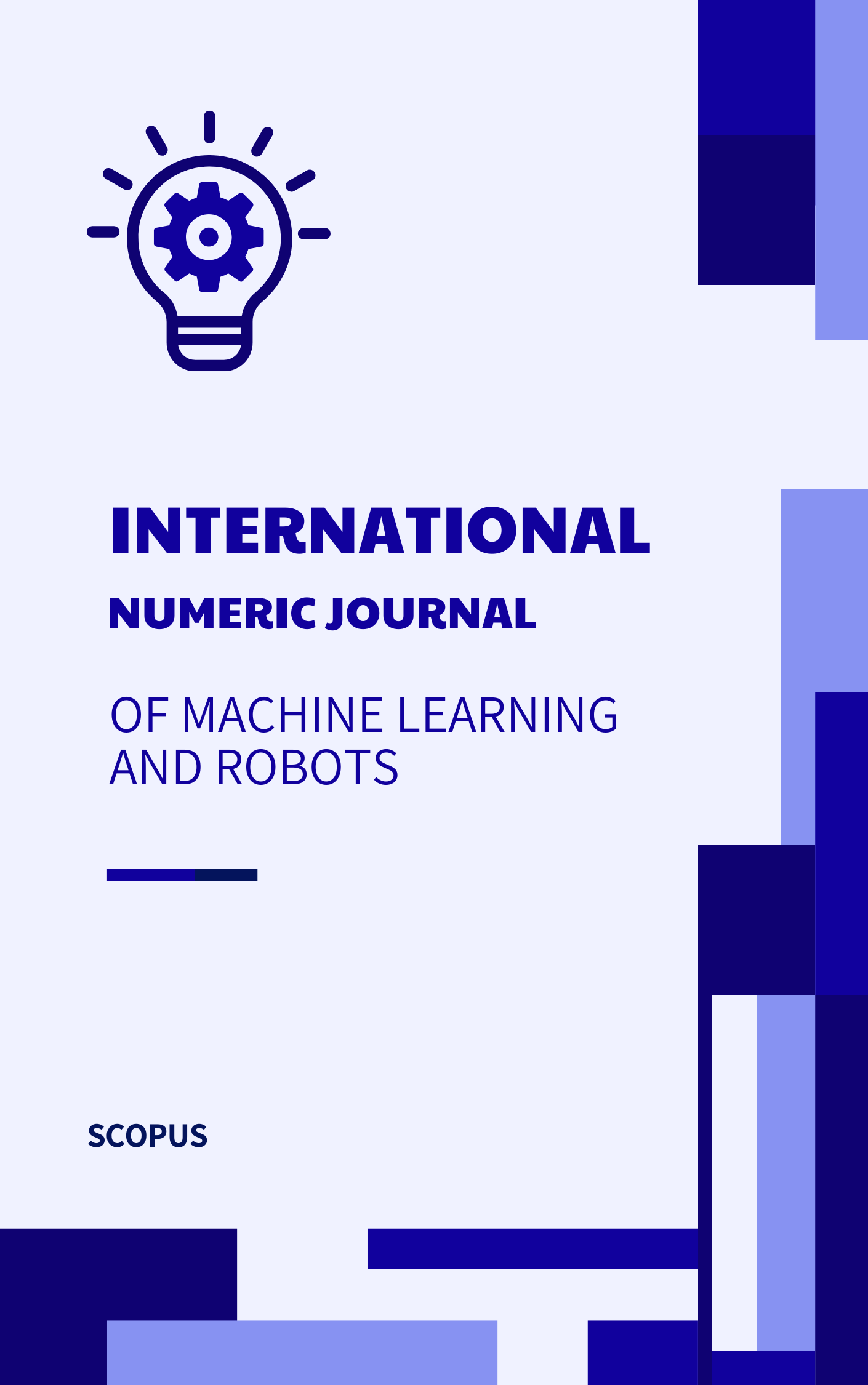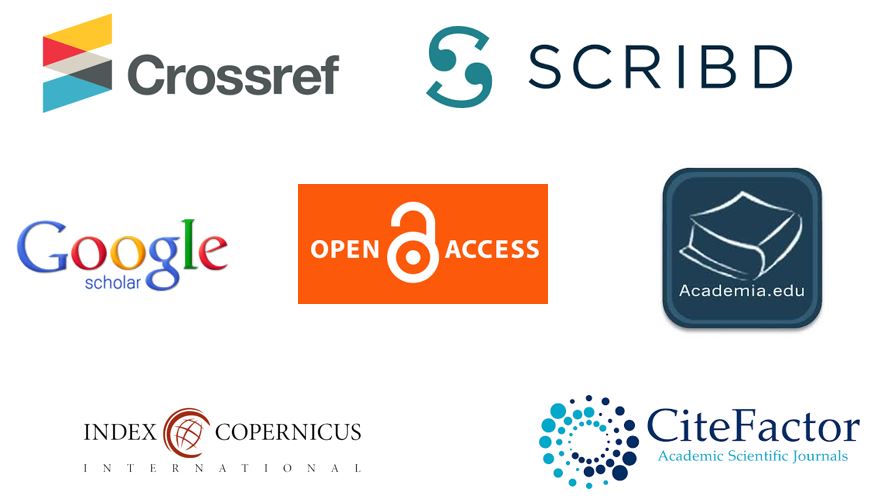A Comprehensive Analysis of Security and Privacy Concerns in Healthcare Applications of Fog Computing
Abstract
This study discovers security and privacy challenges that are popular in applying fog computing within healthcare environments. Utilizing a mixed-methods approach comprising case studies with some surveys and simulations in research delves into issues with the complexity of user authentications for data privacy concerns and the dynamic nature of fog networks. Most of the Key solutions identified include the uses of Multifactor Authentication (MFA) and Role-Based Access-Control (RBAC); these keys effectively increase security but require careful implementation due to resource constraints. The role of encryption techniques like AES and RSA in acquiring data on respite and in transit is emphasized with the help of their computational demands. Findings are demonstrated in the critical balance between implementing robust security measures and maintaining system performance, aiming to confirm the protection of sensitive healthcare data and agreement with regulatory standards. Results are underscored by the importance of continuous Monitoring and auditing to detect and mitigate security breaches. Future work should focus on developing lightweight security protocols handmade to meet fog-computing requirements in health care to help enhance both security and efficiency.
References
Iwaya, L. H., Ahmad, A., & Babar, M. A. (2020). Security privacy for mHealth and uHealth systems: a systematic mapping study. IEEE Access, 8, 150081-150112.
Bhatia, J., Italiya, K., Jadeja, K., Kumhar, M., Chauhan, U., Tanwar, S., ... & Raboaca, M. S. (2022). An overview of fog data analytics for IoT applications. Sensors, 23(1), 199.
Sharma, A., Kaur, S., & Singh, M. (2021). A comprehensive review on blockchain and Internet of Things in healthcare. Transactions on Emerging Telecommunications Technologies, 32(10), e4333.
Dwivedi, R., Mehrotra, D., & Chandra, S. (2022). Potential of Internet of Medical Things (IoMT) applications in building a smart healthcare system: A systematic review. Journal of oral biology and craniofacial research, 12(2), 302-318.
Tabrizchi, H., & Kuchaki Rafsanjani, M. (2020). A survey on security challenges in cloud computing: issues, threats, and solutions. The journal of supercomputing, 76(12), 9493-9532.
Hourani, O. (2021). Essential Healthcare Services and Cloud Computing.
Newman, G. B. (2020). Factors Affecting the Slow Adoption of Edge Computing in the United States: A Quantitative Study (Doctoral dissertation, Capella University).
Hines-Cross, D. (2020). Security Improvements for Implementing the Internet of Things into Medium and Large-Sized Businesses (Doctoral dissertation, Colorado Technical University).
Tazi, F., Dykstra, J., Rajivan, P., & Das, S. (2022). Sok: Evaluating privacy and security vulnerabilities of patients' data in healthcare. In International workshop on socio-technical aspects in security (pp. 153-181). Springer, Cham.
Hu, P., Dhelim, S., Ning, H., & Qiu, T. (2017). Survey on fog computing: architecture, key technologies, applications and open issues. Journal of network and computer applications, 98, 27-42.
Sabireen, H., & Neelanarayanan, V. J. I. E. (2021). A review on fog computing: Architecture, fog with IoT, algorithms and research challenges. Ict Express, 7(2), 162-176.
Aazam, M., Zeadally, S., & Harras, K. A. (2018). Fog computing architecture, evaluation, and future research directions. IEEE Communications Magazine, 56(5), 46-52.
Jararweh, Y., Doulat, A., AlQudah, O., Ahmed, E., Al-Ayyoub, M., & Benkhelifa, E. (2016, May). The future of mobile cloud computing: integrating cloudlets and mobile edge computing. In 2016 23rd International conference on telecommunications (ICT) (pp. 1-5). IEEE.
Kumar, V., Laghari, A. A., Karim, S., Shakir, M., & Brohi, A. A. (2019). Comparison of fog computing & cloud computing. Int. J. Math. Sci. Comput, 1, 31-41.
Abdulqadir, H. R., Zeebaree, S. R., Shukur, H. M., Sadeeq, M. M., Salim, B. W., Salih, A. A., & Kak, S. F. (2021). A study of moving from cloud computing to fog computing. Qubahan Academic Journal, 1(2), 60-70.
Zhang, R., & Liu, L. (2010, July). Security models and requirements for healthcare application clouds. In 2010 IEEE 3rd International Conference on cloud Computing (pp. 268-275). IEEE.
Kumar, P., & Lee, H. J. (2011). Security issues in healthcare applications using wireless medical sensor networks: A survey. sensors, 12(1), 55-91.
Al Ameen, M., Liu, J., & Kwak, K. (2012). Security/ privacy issues in wireless sensor networks for healthcare applications. Journal of medical systems, 36, 93-101.
Awotunde, J. B., Jimoh, R. G., Folorunso, S. O., Adeniyi, E. A., Abiodun, K. M., & Banjo, O. O. (2021). Privacy and security concerns in IoT-based healthcare systems. In The fusion of internet of things, artificial intelligence, and cloud computing in health care (pp. 105-134). Cham: Springer International Publishing.
Asghari, P., Rahmani, A. M., & Javadi, H. H. S. (2019). Internet of Things applications: A systematic review. Computer Networks, 148, 241-261.
Siyal, A. A., Junejo, A. Z., Zawish, M., Ahmed, K., Khalil, A., & Soursou, G. (2019). Applications of blockchain technology in medicine and healthcare: Challenges and future perspectives. Cryptography, 3(1), 3.
Sebastian, S., Jacob, N. R., Manmadhan, Y., Anand, V. R., & Jayashree, M. J. (2012). Remote patient monitoring system. International Journal of Distributed and Parallel Systems, 3(5), 99.
Lakshmi, G. J., Ghonge, M., & Obaid, A. J. (2021). Cloud based iot smart healthcare system for remote patient monitoring. EAI Endorsed Transactions on Pervasive Health and Technology, 7(28), e4-e4.
Yew, H. T., Ng, M. F., Ping, S. Z., Chung, S. K., Chekima, A., & Dargham, J. A. (2020, February). Iot based real-time remote patient monitoring system. In 2020 16th IEEE international colloquium on signal processing & its applications (CSPA) (pp. 176-179). IEEE.
Suh, M. K., Chen, C. A., Woodbridge, J., Tu, M. K., Kim, J. I., Nahapetian, A., ... & Sarrafzadeh, M. (2011). A remote patient monitoring system for congestive heart failure. Journal of medical systems, 35, 1165-1179.
Plachkinova, M., Andrés, S., & Chatterjee, S. (2015, January). A taxonomy of mHealth apps--security / privacy concerns. In 2015 48th Hawaii International Conference on System Sciences (pp. 3187-3196). IEEE.
Sourav, A. (2022). Data security with privacy concern in the healthcare system. Internet of Healthcare Things: Machine Learning for Security and Privacy, 1-25.
Kruse, C. S., Frederick, B., Jacobson, T., & Monticone, D. K. (2017). Cybersecurity in healthcare: A systematic review of modern threats and trends. Technology and Health Care, 25(1), 1-10. https://doi.org/10.3233/THC-161263
McLeod, A., & Dolezel, D. (2018). Cyber-analytics: Modeling factors associated with healthcare data breaches. Decision Support Systems, 108, 57-68. https://doi.org/10.1016/j.dss.2018.02.012
Coventry, L., & Branley, D. (2018). Cybersecurity in healthcare: A narrative review of trends, threats and ways forward. Maturitas, 113, 48-52. https://doi.org/10.1016/j.maturitas.2018.04.008
McCullough, J. S., Parente, S. T., & Town, R. (2016). Health information technology and patient outcomes: The role of information and labor coordination. RAND Journal of Economics, 47(1), 207-236. https://doi.org/10.1111/1756-2171.12124
Reddy, S., & Sharma, B. (2016). Managing healthcare IT risks: The impact of IT assets and capabilities. Journal of Information Technology Management, 27(1-2), 35-47. https://doi.org/10.1080/10580530.2016.1158192
Appari, A., & Johnson, M. E. (2010). Information security and privacy in healthcare: Current state of research. International Journal of Internet and Enterprise Management, 6(4), 279-314. https://doi.org/10.1504/IJIEM.2010.035624
Fu, K., & Blum, J. M. (2018). Ensuring cybersecurity in medical devices. New England Journal of Medicine, 378(14), 1274-1276. https://doi.org/10.1056/NEJMp1716767
Caine, K., & Hanania, R. (2013). Patients want granular privacy control over health information in electronic medical records. Journal of the American Medical Informatics Association, 20(1), 7-15. https://doi.org/10.1136/amiajnl-2012-001032
Safi, S., Thiessen, T., & Schmailzl, K. J. (2018). Acceptance and resistance of new digital technologies in medicine: Qualitative study. JMIR Research Protocols, 7(12), e11072. https://doi.org/10.2196/11072
Yi, S., Qin, Z., & Li, Q. (2015). Security and privacy issues of fog computing: A survey. In W. Zhang & Z. Qian (Eds.), Wireless Algorithms, Systems, and Applications (pp. 685-695). Springer. https://doi.org/10.1007/978-3-319-21837-3_67





